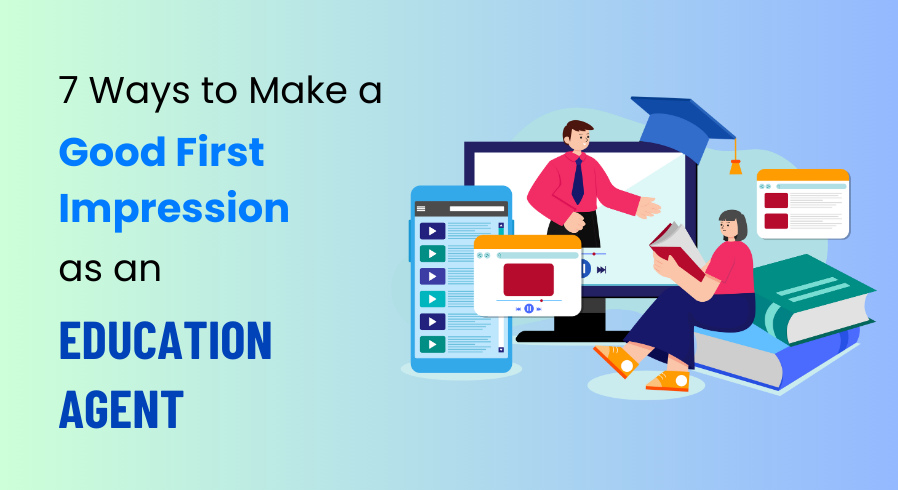Table of Contents

In today’s digitally driven world, education has evolved from simple classroom teaching to complex student acquisition and engagement journeys. While academic excellence remains at the heart of any institution, it's no longer the only factor influencing a student’s decision to enroll. From the moment a student visits your website or fills out an inquiry form, they begin a journey—one that can be guided, shaped, and enriched by lead nurturing.
Educational organizations—whether universities, schools, coaching centers, or ed-tech platforms—must recognize that lead nurturing is not just a "nice to have," it's a critical element in the student recruitment funnel. Without it, institutions risk losing interested prospects to competitors who are more proactive, personalized, and persistent in their communication.
What is Lead Nurturing in Education?
Lead nurturing is the process of building relationships with prospective students by providing them with the information, guidance, and value they need throughout their decision-making journey. In the educational context, this may begin when a student downloads a brochure, asks a question during a webinar, or signs up for a campus tour.
Unlike traditional sales tactics that aim for quick conversions, lead nurturing is about consistent, value-driven communication over time. It aims to turn curious visitors into applicants, and ultimately, enrolled students.
Why Is Lead Nurturing Critical for Educational Institutions?
1. Long Decision Cycles
Education is a high-involvement purchase. Prospective students don’t make decisions overnight. Whether it’s choosing a college, online course, or international program, the process often involves weeks or even months of research, comparison, discussion with family, and financial planning.
Lead nurturing ensures that you stay top-of-mind throughout this long decision-making cycle, answering questions and providing reassurance when it matters most.
2. High Competition
Educational institutions are competing not just with local alternatives but with national and international ones. What sets your institution apart may not be clear in a single website visit or email. With proper nurturing, you can gradually demonstrate your institution’s strengths—be it faculty, placement, culture, or alumni success stories.
3. Personalization is Expected
Today’s students expect personalized experiences. A generic email or irrelevant message won’t capture their interest. Lead nurturing allows you to segment your leads by interests, location, demographics, or behavior and send them tailored information that actually resonates.
4. Builds Trust and Credibility
Trust is the currency of education marketing. When students consistently receive valuable, relevant, and timely information from your institution, they begin to see you as a helpful guide rather than a pushy advertiser. This builds credibility and creates emotional engagement that drives enrollment.
Lead Nurturing Strategies That Work for Educational Institutions
Let’s break down some powerful lead nurturing strategies that can significantly boost student engagement and conversion rates.
1. Email Drip Campaigns
One of the most effective tools for lead nurturing is a drip email campaign. These are a series of pre-written emails sent automatically over time based on a lead’s behavior or stage in the funnel.
Example:
- Day 1: Welcome Email + Program Overview
- Day 3: Student Testimonials
- Day 7: Virtual Campus Tour
- Day 10: Application Checklist
- Day 14: Deadline Reminder
These emails are informative, spaced out, and strategically designed to guide the lead closer to enrollment.
2. Educational Webinars and Live Q&As
Webinars are excellent for delivering value while creating real-time engagement. Topics like "How to Choose the Right University," "Career Opportunities in [Your Field]," or "Meet Our Alumni" can attract a lot of interest.
Follow up after each webinar with personalized thank-you notes, session recordings, and next-step recommendations.
3. Dynamic Content on Your Website
Your website should not show the same thing to everyone. Use marketing automation tools to dynamically change content based on the visitor's profile. For example:
- Show international scholarship info to overseas visitors.
- Highlight local campus events to domestic students.
This makes your site feel personalized and relevant.
4. Behavior-Based Follow-Ups
Track user behavior across your digital platforms. If a lead is repeatedly visiting your "MBA Program" page, send them a follow-up email specifically about the MBA curriculum, alumni, and job placements.
This kind of behavior-driven engagement shows that you understand their interests and are ready to help.
5. SMS and WhatsApp Follow-Ups
In regions like Asia, Africa, and Latin America, SMS and WhatsApp are often preferred channels. Use them for:
- Application reminders
- Event invites
- Fee updates
- Personalized queries
Make sure these messages are short, friendly, and helpful—not spammy.
Role of CRM in Lead Nurturing for Educational Institutions
An education CRM like EDUctrl or HubSpot Education helps institutions manage thousands of leads efficiently.
Here’s how a CRM supports lead nurturing:
- Automated follow-ups: Never miss out on responding to a lead at the right time.
- Lead scoring: Identify which leads are most likely to convert and prioritize them.
- Segmentation: Group leads by source, program interest, location, or stage.
- Analytics: Understand what content and channels drive the most conversions.
In short, a CRM centralizes your entire lead-nurturing process, making it faster, smarter, and more scalable.
Best Practices for Effective Lead Nurturing
Segment Your Leads
The more specific your messaging, the better the engagement. Segment leads by:
- Program of interest
- Stage of the admission journey
- Geography
- Age or background
Offer Value, Not Just Promotion
Your emails or WhatsApp messages should primarily aim to help rather than sell. Examples include:
- Free career counseling sessions
- Admission FAQs
- Application checklist
- Financial aid guides
Use Testimonials and Social Proof
Students trust other students. Showcase success stories, alumni journeys, and current student experiences to build trust and show real outcomes.
Multi-Channel Communication
Use a mix of channels—email, SMS, social media, WhatsApp, phone calls, webinars—to reach students in the way they prefer.
Consistent Branding
Make sure your voice, tone, and visuals are consistent across all touchpoints. This reinforces your identity and creates familiarity.
How to Measure Lead Nurturing Success
You can’t improve what you don’t measure. Here are the key metrics to track:
- Open Rates & Click-Through Rates (CTR) of emails
- Engagement Rates on webinars, WhatsApp, or SMS
- Lead-to-Application Conversion Rate
- Time to Conversion
- Bounce/Unsubscribe Rate
- Return on Investment (ROI) of lead nurturing tools
Use these metrics to tweak your campaigns and double down on what’s working.
Real-World Example: How Lead Nurturing Transformed Enrollment
Case Study: TechBridge Institute
TechBridge, a mid-sized engineering college in India, was struggling with high drop-off rates after inquiry. By implementing a lead nurturing funnel through email, WhatsApp, and webinars, they achieved:
- 40% increase in applications from nurtured leads
- 50% more engagement with alumni videos
- 30% faster response rate from prospects
They used segmented campaigns targeting students interested in Mechanical Engineering separately from those interested in Computer Science. Follow-ups were tailored to each stream. Result? Better engagement, more conversions, and fewer drop-offs.
The Future of Lead Nurturing in Education
The future is hyper-personalized. With AI, institutions can now automate messaging that feels personal, adapt in real-time based on student behavior, and predict which leads are most likely to convert.
Augmented reality campus tours, chatbot counselors, and smart course recommendation engines are already changing how students interact with institutions.
Final Thoughts: Don’t Just Capture Leads—Grow Relationships
Lead generation gets you noticed. But lead nurturing gets you enrollments.
Without nurturing, you're leaving money, opportunities, and potentially brilliant students on the table.
Whether you're a university looking to boost domestic admissions or an ed-tech platform expanding globally, lead nurturing is the glue that holds your recruitment funnel together. When done right, it builds meaningful connections that result in not just admissions—but advocacy, loyalty, and long-term success.









